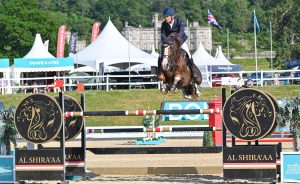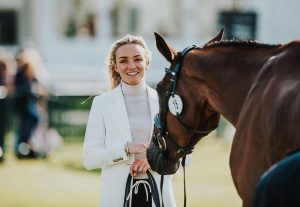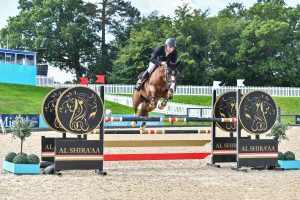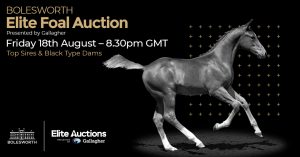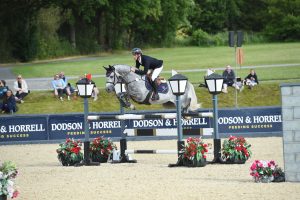Horse Scout blogger in meditation mode: Whether you are training a top class show jumper or Eventer as an athlete or working with young horses or perhaps trying to balance a big horse under you as per my recent blog. Then working from the ground is a useful and effective way to begin working on core strength with your horse.
Core strengthening exercises strengthen and stabilise the spine and pelvic muscles as the horse responds to pressure over specific areas. If you have strong hands, you can apply pressure manually; if not, use a metal thimble over your thumb or finger. Perform three to five repetitions, allowing the muscles to relax for a few seconds after each exercise.
Some horses, especially those that are girthy or cold-backed, may resent certain procedures. If resentment persists, omit the exercise until you’ve consulted with your veterinarian.
The following exercise stimulates lifting of the base of the neck, sternum, and withers through pressure on the ventral midline between the forelimbs. These movements are essential for self carriage.
Sternal, withers, and thoracic lifting exercise:
1. Stand facing the horse’s side, just behind the elbow.
2. Apply upward pressure to the sternum (breastbone) in the middle of your horse’s chest, between the pectoral muscles. Gradually slide your hand back between the forelimbs and behind the girth line while maintaining a steady upward pressure.
3. The horse responds by initially lifting through the sternum and withers. Then as the pressure moves further back, he responds by lifting in the thoracic area immediately behind the withers, and finally in the thoracic area under the saddle.
Note: the amount of pressure needed to stimulate a response will vary between horses, so start gently and increase pressure gradually, or use a slow stroking action until the horse responds.
- Balancing Exercises
Balancing exercises improve balance and stability by inducing the horse to use active muscular contractions to shift the centre of gravity toward his haunches and/or to resist displacement of his centre of gravity. A horse uses his muscles in some of the balancing exercises to shift his centre of gravity, while in others, he uses his muscles to resist a shift.
The next exercise stimulates activation of the pelvic stabiliser muscles to maintain the horse’s balance.
Tail pull:
1. Stand to one side of the hindquarters.
2. Take hold of the horse’s tail, pull it toward you by flexing your elbow. (The goal is not to pull the horse off balance, but to stimulate resistance in the pelvic stabiliser muscles.) You’ll see the muscles around the stifle contracting as the horse resists the pulling force.
3. You can gradually increase the amount of force applied to the tail or the number of repetitions as the muscles get stronger.
Remember to check with your veterinarian before including such exercises into your horse’s training regimen; this is especially important if the horse is recovering from an injury.
Core training exercises can be done without a warm-up–for example, in horses that are recovering from injury–because the horse controls the amount of motion, and loading of the joints is less than during locomotion.
This advice has come from Dr. Hilary Clayton —equestrian, veterinarian, author, researcher, and clinician — is known internationally for her ongoing contribution to the understanding of equine biomechanics particularly relating to performance and conditioning. Dr. Clayton’s targeted studies in bitting, saddle fit biometrics, kinematics and kinetics, and locomotion have provided valuable insight into the mechanics of equine sports, the interaction between rider and horse, and the effects of various rehabilitation techniques. You can read about her here of buy her book The Dynamic Horse.

